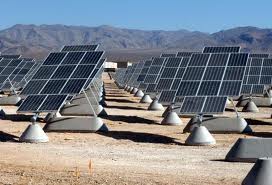President Obama announces Department of Defense Renewable Energy Expansion
 President Obama last week announced an expanded goal for the Department of Defense (DOD) to deploy three gigawatts (GWs) of renewable energy at Army, Navy, and Air Force installations by 2025. This announcement is specific to the development of renewable power, but it continues to reinforce the notion that the DOD will be a key market-creator for the advanced energy sector (in both renewable power and fuels) in the years to come. As a follow-up to Wilson Sonsini Goodrich & Rosati’s recent alert outlining upcoming biofuels opportunities,1 the update below provides insight into the DOD’s most recent announcements, including information on how best to navigate upcoming DOD opportunities, as well as a discount code for Infocast’s upcoming Defense Renewable Energy & Military Microgrids Conference.
President Obama last week announced an expanded goal for the Department of Defense (DOD) to deploy three gigawatts (GWs) of renewable energy at Army, Navy, and Air Force installations by 2025. This announcement is specific to the development of renewable power, but it continues to reinforce the notion that the DOD will be a key market-creator for the advanced energy sector (in both renewable power and fuels) in the years to come. As a follow-up to Wilson Sonsini Goodrich & Rosati’s recent alert outlining upcoming biofuels opportunities,1 the update below provides insight into the DOD’s most recent announcements, including information on how best to navigate upcoming DOD opportunities, as well as a discount code for Infocast’s upcoming Defense Renewable Energy & Military Microgrids Conference.In his January 2012 “State of the Union” address, President Obama announced that the Navy would aspire to develop one GW of renewable energy at its installations by 2020. The President’s April 11 announcement related to deploying three GWs of renewable energy at DOD facilities expanded this Navy-specific commitment to include the Air Force and the Army. Specifically, the Army will match the Navy’s commitment of developing one GW of renewable energy by 2020, and the Air Force will aim to obtain one GW of renewable energy by 2016.
The April 11 announcement is particularly noteworthy in that it quantifies the amount of renewable energy that the Navy, Army, and Air Force expect to procure by 2020. However, it does not necessarily expand the DOD’s commitment to procuring renewable energy. Since 2007, the DOD has been working toward a voluntary goal of producing or procuring 25 percent of its total electricity consumption from renewable energy sources by 2025, which is codified in the National Defense Authorization Act of 2007. While this is not a congressional mandate that the DOD must meet, it is a goal that each of the services has been taking very seriously.
For example, on August 10, 2011, the office of the Assistant Secretary of the Army for Installations, Energy & Environment announced the formation of the Energy Initiatives Task Force (EITF) to serve as the central managing office for the deployment of large-scale renewable Army energy projects. In that announcement, the Army estimated that an investment of up to $7.1 billion over the next 10 years would be required to procure 2.1 million megawatt-hours annually to meet Army goals and federal mandates, and to provide enhanced energy security. The Army will use the Request for Proposal (RFP) released by the Army EITF in draft form in March 2012 to begin the process of meeting those objectives.2 In contrast to the Army’s centralized approach to these initiatives with the formation of EITF, the Navy and Air Force are expected to announce opportunities on a case-by-case basis, but they also are taking the 25-percent-by-2025 goal very seriously.
Moreover, to assist the services in deploying renewable energy and meeting the myriad goals set forth to date, the Office of the Secretary of Defense released the DOD’s Operational Energy Strategy: Implementation Plan on March 20, 2012. The Implementation Plan was a long-anticipated follow-up to the DOD’s Operational Energy Strategy, which was released on June 14, 2011.
While these recent announcements are important, they do not necessarily represent new commitments on the DOD’s behalf. Rather, these developments serve to outline, quantify, and confirm the DOD’s commitment to procuring and deploying renewable energy.
The vast opportunities available within the DOD are difficult for the private sector to ignore given the agency’s increasingly prominent role in the market, but these opportunities also can be especially difficult to navigate. Fortunately, there are streamlined and efficient approaches that companies can take to learn what currently is underway and, perhaps more importantly, what is to come. Communicating with DOD representatives at all levels, pursuing DOD demonstration opportunities, and collaborating with strategic partners are efficient methodologies for uncovering and pursuing upcoming opportunities. Additionally, DOD-specific conferences that attract widespread participation by industry as well as government officials can serve as a starting point for companies to obtain information about DOD programs and contracting opportunities, and connect with potential partners.
You can return to the main Market News page, or press the Back button on your browser.

